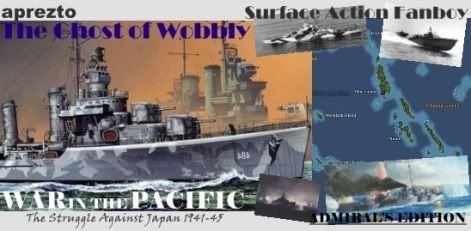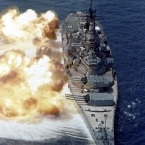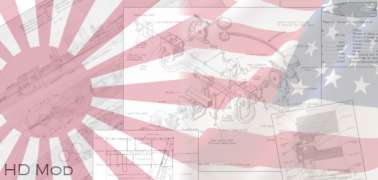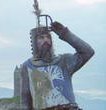herwin
Posts: 6059
Joined: 5/28/2004
From: Sunderland, UK
Status: offline

|
quote:
ORIGINAL: Mynok
Well just show us how that force used 129,000 tons of fuel up then. 
I'll post this in two stages.
OK, there are a number of issues you have to take into account:
1. Some of the IJN warships were lightly built and top-heavy, and had to retain some fuel for ballast.
2. Air operations took place at 24-26 knots and required extra fuel (about 3-4x as much as for cruise speeds).
3. The final approach to Hawaii was a long high-speed run at 20-26 knots, using 2-4 times as much fuel as cruise speeds. This was a key planning constraint. If the destroyers could not be refueled completely, they would have been left with the tankers. While in the vicinity of Hawaii, the KB operated at about 25 knots.
4. The quoted data were for ships in clean and new condition.
5. Refueling operations were vulnerable and slow (9-12 knots) and could not be performed safely if there was danger of air or surface attack. In the north Pacific most winters, no more than 1 day in 10 was suitable for refueling operations due to weather, although the KB was favoured by good weather.
6. CVTFs needed to be out of range (about 200 nm) of enemy SAGs at night and when air operations were shut down.
Data:
These give nominal bunkerage and range. The distance travelled by the DD Akigumo from beginning to end was 8593 nm. This included about 1000 nm at 24 knots and 7600 nm at 14 knots. Akigumo was refueled 12 times during the trip, for a total of about 512 tons, burning 1079 tons in total. The refueling after the attack on Pearl Harbour was 250 tons, about 8 times normal daily usage. The Pearl Harbour run cost the destroyer 0.25 tons per NM, while the remainder of the voyage cost about 0.1 tons per NM.
Kongo class: 6330 tons of fuel, 10000 nm@14 knots (required refueling, Hiei at least 354 tons, Kirishima at least 469 tons)
Akagi: 5775 tons of fuel plus 1450 tons supplemental, 8200 nm@16 knots (also required refueling since she could only cruise 60% of the distance)
Kaga: 8208 tons, 10000 nm@16 knots
Soryu:3670 tons plus 350 tons supplemental, 7750 nm@18 knots (also required refueling since she could only cruise 60% of the distance)
Hiryu: about 4400 tons plus 350 tons supplemental, 7670 nm@18 knots (another source 10330 nm@18 knots!) (required refueling since she could only cruise 60% of the distance)
Shokaku class: 4100 tons (another source 3500 tons, war diary indicates about 5500 tons, which I trust), 9700 nm@18 knots (Z refueled once for 350 tons, had 1700 tons of fuel left upon return, so she used about 4000 tons)
Tone/Chikuma: about 2000 tons plus 290 tons each supplemental, 8000nm@18 knots (refueled)
Abukuma: unknown bunkerage, 9000nm@10 knots (refueled)
11 Destroyers: 500-600 tons, 5000-5700nm@14 knots, about 1000nm@34 knots (required 30 tons/day during cruise and refueled often)
The seven fastest tankers available.
Total usage was about 60-70,000 tons. About 75% was spent on the voyage and 25% on the attack. An additional day at Pearl would have had the destroyers and some of the carriers running on fumes at the end of the attack. Given the North Pacific weather, it might have been a few days until they could refuel.
Only the Kaga and Shokakus could reach Hawaii and return without refueling. The track was Hitokappu Bay to 42N 165W at 14 knots, then to 32N, 157W (700 NM due north of Pearl Harbour), then south to a point about 230 NM north of Pearl Harbour at 24-26 knots, and finally return. The DD screen was to return to Hitokappu Bay if it couldn't be refueled during the first leg due to bad weather.
Lahaina anchorage was reconnoitered. Consideration was given to returning via the west side of Oahu. If the US Fleet was at Lahaina, the attack was to be just with torpedoes.
< Message edited by herwin -- 8/13/2009 11:35:46 AM >
_____________________________
Harry Erwin "For a number to make sense in the game, someone has to calibrate it and program code. There are too many significant numbers that behave non-linearly to expect that. It's just a game. Enjoy it." herwin@btinternet.com |
 Printable Version
Printable Version




















 New Messages
New Messages No New Messages
No New Messages Hot Topic w/ New Messages
Hot Topic w/ New Messages Hot Topic w/o New Messages
Hot Topic w/o New Messages Locked w/ New Messages
Locked w/ New Messages Locked w/o New Messages
Locked w/o New Messages Post New Thread
Post New Thread